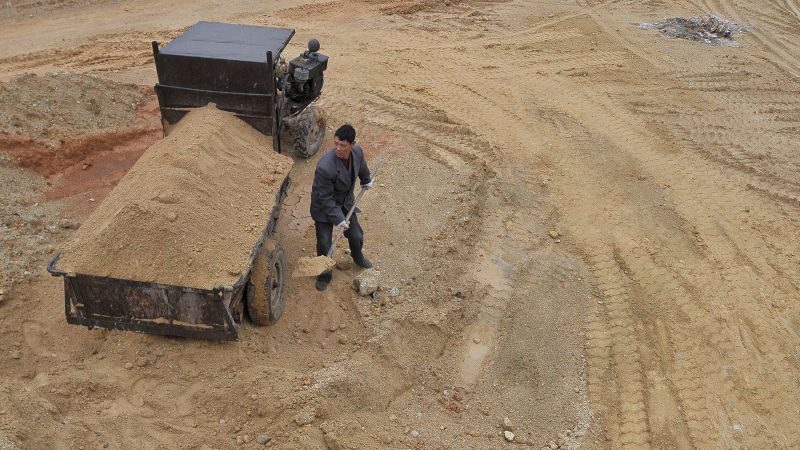In the backdrop of a temporary truce in the ongoing trade war between China and the United States, there are distinct signs indicating that Beijing remains steadfast in controlling its rare earth exports. This subtle maneuvering replicates China’s strategic approach of leveraging its resources in negotiations, especially during growing tensions with Washington. This assertive stance presents considerations not just for diplomatic dialogues but also for critical supply chains across various industries.
Recently, at a trade meeting in Geneva, China made commitments to roll back certain tariffs, pledging to suspend, or even eliminate, non-tariff barriers that were enacted against U.S. goods in retaliation for earlier tariffs set by the Trump administration. Nonetheless, this declaration has led to uncertainty in the business landscape regarding its application to China’s strict export controls on seven rare earth minerals, which were imposed shortly after the U.S. retaliatory tariffs were in place. These rare earths are fundamental components in a myriad of essential products, from smartphones and electric vehicles to advanced military technology like F-35 jets.
U.S. Trade Representative Jamieson Greer, returning from the Geneva negotiations, attempted to reassure stakeholders regarding these export controls in a Fox News dialogue. He implied that China had acquiesced to lifting its restrictions on rare earth exports as part of the trade agreement. His confidence in China’s compliance reflected optimism; however, there appears to be scant evidence to support that assertion. Experts suggest that China is not easing its newly enforced export controls. In fact, the Chinese government seems to be enhancing enforcement and oversight instead.
China’s export control system introduced in April does not prohibit rare earth exports outright but instead mandates government approval for each shipment. This regulatory framework has resulted in substantial delays for American companies needing access to these critical materials and has raised anxieties across various sectors, notably the automotive and defense industries. Amidst these challenges, Jon Hykawy, president of Stormcrow Capital, expressed skepticism about the expectations set forth by U.S. officials, suggesting that the imposition of export controls was a calculated effort to prioritize domestic needs in China over international obligations.
Interestingly, despite diplomatic gestures, Chinese authorities have continued their proactive stance against the smuggling of critical minerals. A recent crackdown led by China’s Commerce Ministry defined the agenda to deter illegal outflows of strategic minerals, suggesting a tightening grip on this vital industry. Such measures appear integral to ensuring that resources are maximally beneficial for China’s internal priorities rather than contributing to foreign competitors.
Subsequent discussions in state-run media affirm that the rare earth export controls remain intact. Notably, China began to issue export permits amid claims that this initiative signals the new licensing system’s operational capacity. Nevertheless, this new licensing framework entails stringent conditions, requiring distinct permits for each batch of shipments, thereby further emphasizing China’s grip over the rare earth supply chain.
Amid this intricate web, companies such as Volkswagen, which are prominent players in the automotive sector, have recently received licenses from Chinese authorities, yet there are no signals suggesting that the broader control over exports is being eased. Critics argue that China’s restrictive measures aim to strategically influence and undermine the U.S. defense sector, highlighting the geopolitical implications of these actions.
China’s dominance in the global rare earth market is significant, accounting for a staggering 61% of mined production and an overwhelming 92% of processing stages. Historical incidents, such as the 2010 export halt to Japan during a territorial dispute, illuminate that China has previously employed its rare earth resources as a geopolitical weapon. The country’s tight rein on critical minerals extends to other valuable resources — including gallium, germanium, and antimony — reaffirming Beijing’s approach of maintaining a power dynamic amidst global trade tensions.
The enforcement of stringent licensing rules invariably gives rise to concerns regarding transparency and access for foreign companies. Experts cautiously note that while the ability to procure materials such as magnets may technically still be present, the bureaucratic hurdles posed by detailed applications enable China to scrutinize potential vulnerabilities among its partners. This creates an environment of uncertainty that can further destabilize supply chains in sectors critical to Western economies.
As global reliance on China’s rare earth resources continues to shape international relations, the ability to access these materials may become increasingly complex. The licensing system reflects a broader geopolitical strategy, particularly in light of the U.S. and China’s escalating tensions. Importantly, as the licensing process subjects foreign companies to enhanced scrutiny, it simultaneously serves to strengthen China’s power in the global arena, posing significant questions about future technological advancements and geopolitical alignments.



